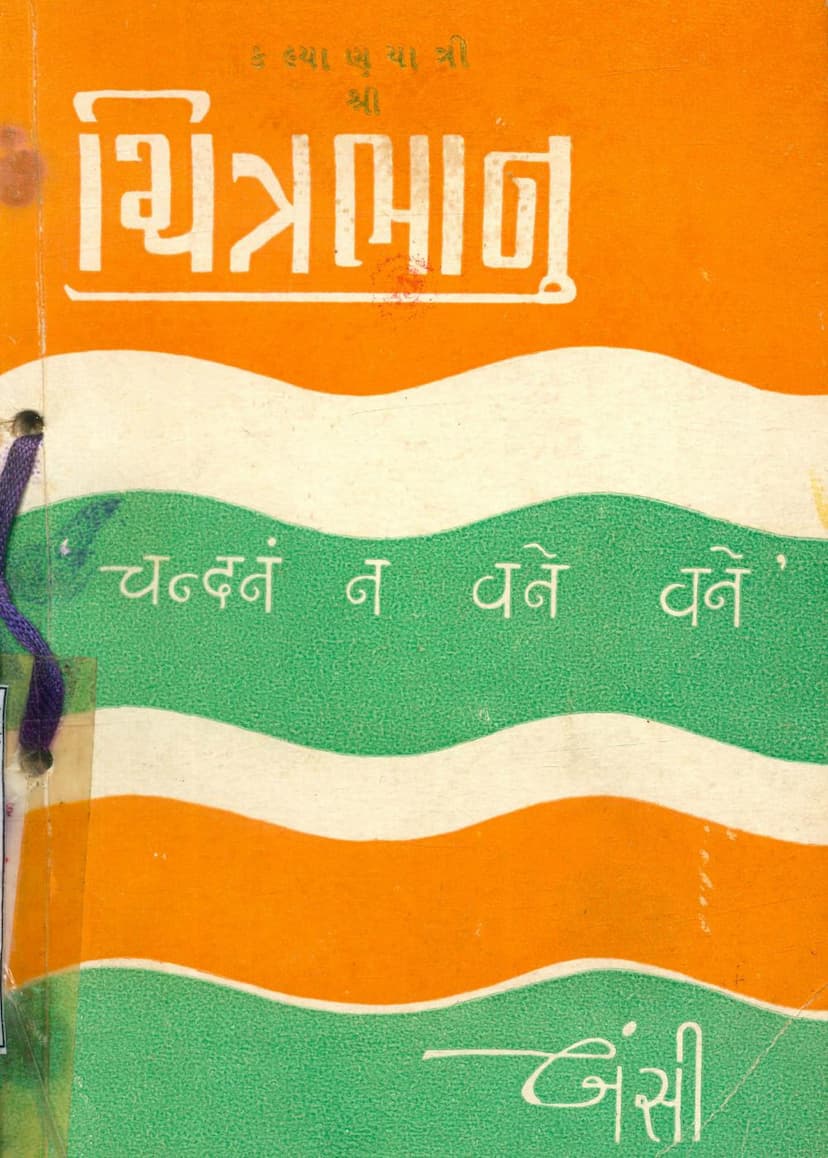Kalyanyatri Shree Chitrabhanu
Added to library: September 2, 2025

Summary
Here's a comprehensive summary of the Jain text "Kalyanyatri Shree Chitrabhanu" by Bansi:
This book is a tribute and detailed portrait of Muni Shri Chandraprabh Sagarji Maharaj, popularly known as Chitrabhanu. It aims to capture the essence of his personality, teachings, and the profound impact he has on those who encounter him. The author, Bansi, presents a multifaceted view of Chitrabhanu, describing him as a "Saint that Speaks in the Silence of our Soul," a "Spring in the Desert," and a "Prince of Plenty."
Key Aspects and Themes:
-
A Transformative Figure: The book emphasizes Chitrabhanu's ability to bring about positive transformation in individuals and society. He is portrayed as someone who guides people towards unity within themselves and helps them reach their ultimate goals. His knowledge, wisdom, and love for humanity are highlighted as sources of spiritual enlightenment.
-
Inspirational Encounters: The text includes testimonials from prominent figures like Sorella von Le Brett and Indira Gandhi, who were deeply impressed by Chitrabhanu. Le Brett describes him as a spiritual beacon who enlightened her soul, while Gandhi notes his resemblance to Christ and the deep peace he radiated.
-
The Power of Inner Virtues: Bansi contrasts superficial greatness with genuine inner virtue. The book suggests that true greatness lies in simple living, high thinking, and a deep connection with life's currents, which allow individuals to build "invisible towers of precious virtues."
-
The Artist's Inspiration and Process: A significant portion of the book delves into the author's personal experience of being inspired to capture Chitrabhanu's likeness. The author describes an internal dialogue and struggle to translate the spiritual essence of Chitrabhanu onto paper. This section explores the creative process, the role of divine inspiration, and the humility required to portray a spiritual master. The author emphasizes that the portrayal is not merely their own work but a channeling of the collective feelings and inspirations of the audience.
-
Chitrabhanu's Qualities: The book meticulously details Chitrabhanu's perceived qualities:
- Eloquent Speaker and Teacher: He speaks with profound wisdom, using simple yet impactful language that resonates deeply with the audience. His lectures are described as a "river of knowledge" and a source of "nectar."
- Embodiment of Virtues: He is depicted as embodying virtues like compassion, humility, equanimity, purity, and unwavering adherence to spiritual principles. His very presence is said to bring peace and a sense of renewal.
- Spiritual Depth: He is portrayed as someone who has achieved profound spiritual realization, living a life dedicated to the welfare of all beings. His teachings often touch upon the essence of Jain philosophy, emphasizing concepts like samyak darshan, jnan, and charitra (right perception, knowledge, and conduct).
- Charismatic and Inspiring Personality: His eyes, demeanor, and speech are described as radiating peace, love, and profound wisdom. He has a remarkable ability to connect with people from all walks of life, inspiring them to seek higher truths and live a more meaningful existence.
- Master of Arts and Philosophy: The text acknowledges his mastery over various languages and his deep engagement with literature and philosophy, all of which inform his teachings.
- Holistic Approach: Chitrabhanu's teachings are presented as encompassing not just spiritual doctrines but also practical wisdom for living a balanced and ethical life, addressing the complexities of the modern world.
-
The Inner and Outer Man: The book distinguishes between the external appearance and the internal spiritual reality of Chitrabhanu, emphasizing that his true essence lies in his inner purity and spiritual achievements.
-
Call to Action and Self-Reflection: The author encourages readers to engage with Chitrabhanu's message, to reflect on their own lives, and to strive for spiritual growth. The book acts as a catalyst for introspection and a call to embrace a life of virtue and purpose.
-
Metaphorical Language: The text frequently employs metaphors and poetic language to convey the profound and multifaceted nature of Chitrabhanu. He is compared to natural elements like a spring, a river, a mountain, and a fragrant flower, highlighting his life-giving, purifying, and uplifting influence.
In essence, "Kalyanyatri Shree Chitrabhanu" is a devotional and analytical exploration of a spiritual master's life and impact. It seeks to convey the transformative power of his presence and teachings, encouraging readers to seek spiritual enlightenment and live a life of purpose, guided by his virtuous example. The book is a testament to the author's deep admiration and the profound influence Muni Chitrabhanu has had on many individuals and their spiritual journeys.